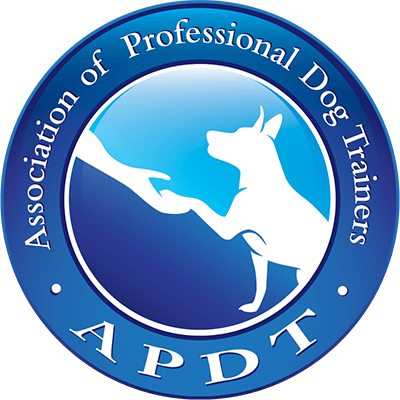Alternative Behaviors – What They Are And Why We Use Them

What is an alternative behavior?
You know when something really aggravates you and you can feel yourself becoming emotionally heightened? And you know how you have a few behaviors you’re likely to perform when feeling aggravated (for example, shouting, clenching your teeth, slamming a door etc..)? Well, wouldn’t it be nice if you had an alternative behavior to perform that served the same function of making you feel better without being so… unseemly? Think about taking 5 deep breaths, confiding your frustrations in a friend or partner, or maybe going for a short walk to calm down. You can’t relax your jaw to take deep breaths and clench it at the same time, nor can you slam a door or shout if you are taking a stroll in the neighborhood. These alternative behaviors still provide an outlet for your emotions without all of the fallout.
When we are working with dogs, particularly those who struggle with reactive behaviors, we try to teach them an alternative behavior. Some use ‘find it’ (tossing treats in the grass for the dog to search for), others use prolonged eye contact, while others may use known cues such as tricks to work on while your dog is in a situation that may provoke a reaction. All of these are alternative behaviors – your dog can’t be staring/lunging/barking at a trigger while also snuffling in the grass, staring at you or doing tricks. The lines get blurry between management and modification here, but that is okay – we are all doing what we have to do to get by.
What alternative behavior do I ask of a dog I am working with?
The alternative behavior I like to use is a ‘check-in’’. I ask the dog, ‘Can you observe that dog in the distance, then turn and check in with me?’. The answer is in their behavior. If they cannot perform the alternative behavior of engaging with me momentarily, they are likely over threshold and cannot make good decisions. We may need to change variables – maybe we need to increase the amount of space between us and the trigger, change the value of reinforcers being used to help the dog be more successful etc.. Regardless, it is really hard for a dog to be barking/lunging/staring at a trigger if they are ‘checked in’ with me.
I love these two videos and frequently send them to my clients or provide them in their training plans. If you want to see what it means to engage with a trigger, then disengage (aka checking in with their handler), check out these two videos:
Why are alternative behaviors so important?
I had this thought while on my walk with Deacon this morning (Deacon is a male Great Pry/Chow mix who struggles with lunging/barking at cars and other dogs while on walks, in his yard and inside the house) – why are alternative behaviors so important? Well, for a dog like Deacon, whose genetics are telling him that he has a potential flock to protect, loud moving triggers can feel like threats to him. How does he mitigate these threats? By shouting at them – and guess what? It works! The cars drive away, the dogs keep on walking, and Deacon gets to pat himself on the back knowing he did his job well.
But what if there was an alternative behavior that still made Deacon feel like he was accomplishing his goal but didn’t feel so crummy at the same time? Something like looking at his handler, getting a reward and walking on? The cars still drive away, the dogs still keep walking down the road, and guess what – there is no longer a need to get so worked up!
This is why I love engage/disengage as an alternative behavior. 1. It changes how the dog feels about their triggers (incoming cars now mean a yummy snack if the dog turns around to look at me). 2. Their nervous systems get a break knowing they don’t have to go over the top to get that threat to go away and 3. Our walks start to feel not only like team work but like a conversation (“Hey, do you see that car incoming? I am worried about it.” “Yes, I see the car, thank you for letting me know. It will pass.”)
The tricky part.
The tricky part is working with a dog until they are choosing to disengage from a trigger instead of having a reaction. We have to let the reinforcement history break down that the dog has built up for themselves, meaning that there is no longer a self-reward for barking/lunging. We do this by working with the dog under threshold at all times, never setting them up for a reaction if we can help it. We then introduce the alternative behavior of engaging with their handler and build a reinforcement history for this behavior instead. We then reintroduce triggers at closer distances, still operating under threshold, showing the dog that if they simply let go of their trigger, something really good happens – and, even better, nothing bad happens! It’s quite a process, and one I recommend you consult the help of a professional for.
In the meantime, try adding alternative behaviors into your own routine and watch your own reactions become less… reactive! 🙂






